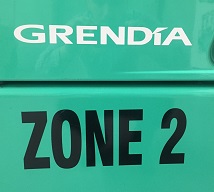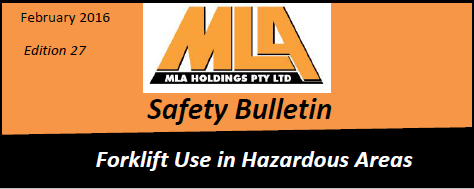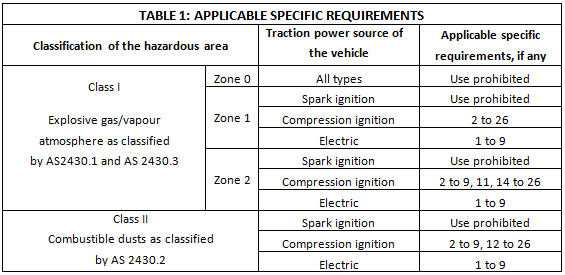

Forklift operators encounter multiple hazards each time they operate a forklift. They must identify and safely negotiate each hazard. Many workplace environments however, contain one or multiple areas that are permanently hazardous. In these areas, only modified forklifts can be used and certain regulations must be followed.
Australian Standard AS 2359.12 –Powered industrial trucks: hazardous areas, defines hazardous areas as “areas that may be hazardous because of the presence of an explosive gas/vapour atmosphere or combustible dusts.” AS2359.12 classifies hazardous areas in two groups. The first, known as Class I, is made up of flammable gases, vapours and liquids. The second group, consisting of combustible dusts, is known as Class II.
Modified forklifts that can operate in these areas are more commonly known as flameproof forklifts. AS2359.12 lists 26 relevant specific requirements of a flameproof vehicle. Depending on its classification, the vehicle may need to comply with one or more of these requirements, as illustrated in Table 1. For a full list of the relevant specific requirements, refer to Australian Standard AS 2359.12.

Flameproof forklifts must be clearly marked, as per Requirement 6 of AS 2359.12. Requirement 6 states: “Vehicles shall be permanently and clearly marked with a minimum of one label indicating the hazardous areas in which operation is permitted.”
Operating flameproof forklifts in hazardous areas can be extremely dangerous. Operation, modifications, maintenance, and repairs must be fully compliant with Australian Standard AS 2359.12 –Powered industrial trucks: hazardous areas. Failure to do so is not only illegal, but may lead to serious consequences.
MLA Holdings has provided flameproof forklifts for use in hazardous areas to many of its clients. Information for this article was sourced from AS 2359.12 –Powered industrial trucks: hazardous areas.








